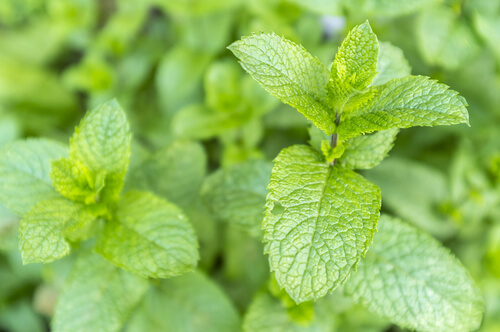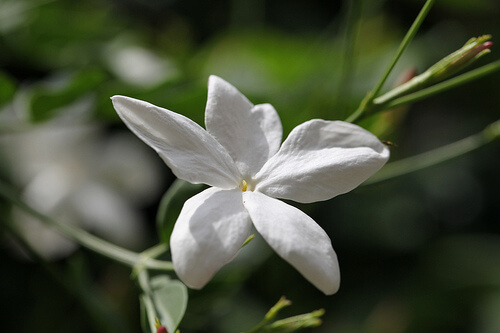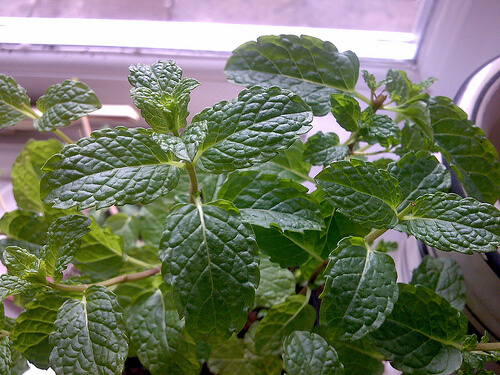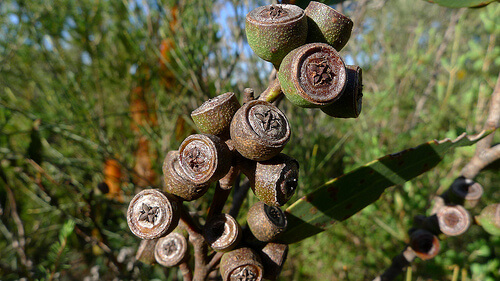10 Plants That Attract Positive Energy

Plants have been used for a long time in homes and offices for decorative purposes. What may surprise you is that, besides giving a natural touch to such indoor spaces, there are plants that attract positive energy, simultaneously keeping bad vibes at bay.
According to many, certain flowers and herbs are better suited to promote well-being than others. But don’t forget, in order to access these benefits, the plants you surround yourself with must be natural, not artificial.
With this in mind, read on to discover 10 incredible options!
Best Plants That Attract Positive Energy
Cactus
Cacti are very beautiful and can make any home or office seem more special. They’re plants that require extra care and can ward off envy, intruders, malicious persons, and hypocrites.
Spearmint

Besides being a plant with many health benefits, spearmint is a good means of protection against witchcraft and envy. Some believe that those who keep fresh spearmint in their homes attract economic prosperity.
You might like:
Bamboo
Bamboo has become very fashionable. Many use it to add a sophisticated touch to their living rooms, but it has also gained popularity among those who want more positive energy in their lives.
People say that bamboo integrates growth and water, promoting purity, transparency and life. When it’s near us, this plant brings us a feeling of comfort and calmness, banishing the negativity.
Jasmine

Known as the couples’ plant, jasmine brings benefits to relationships on a spiritual level. Keep this plant in the bedroom or in other parts of the home where couples are likely to spend time together.
Jasmine attracts positive energy that strengthens relationships and promotes romance.
Rosemary
Rosemary is a plant with great medicinal benefits that have been used since antiquity in many cultures. It can attract sincere love and happiness.
Besides growing fresh rosemary in a pot, we also recommended you place a few sprigs of rosemary in cloth bags. Distribute them in several areas of you home to win the loyalty of those around you.
Mint

Mint combats negativity and helps fight insomnia. It can also help improve communication between you and your loved ones.
Thyme
Since ancient times, thyme has been used to ward off negative energy. It’s a purifying plant, able to fight negativity, prevent nightmares, and promote self-esteem. Having a pot of thyme in your house will ensure your well-being.
Chrysanthemum
Chrysanthemums are famous for their beauty and for the positive energy that they bring into the home. This plant promotes happiness and a good mood.
Put a pot of chrysanthemums in those areas where there’s constant tension and arguments. Among other benefits, they’ve been associated with a life of rest and relaxation.
Eucalyptus

This plant has the capacity to combat bad vibes, which almost always come from envious or malicious individuals. Since it attracts prosperity, you should place some eucalyptus in your office. It will help you sleep better and be more positive.
Aloe vera
Aloe vera is often used in rituals against bad luck and envy. Furthermore, people say that it’s one of the most powerful plants that attract positive energy. No matter where in the home you place it, aloe vera will bring you prosperity and good vibes.
Many believe that, when the aloe vera plant grows and is vibrant, it’s drawing good luck. If it starts to wilt, however, this means it has protected us by absorbing the negative energy that was threatening us.
Read also:
Follow These 5 Steps for Abundance in Your Life
Do you already own any of the 10 plants that attract positive energy which we talked about in this article?
All cited sources were thoroughly reviewed by our team to ensure their quality, reliability, currency, and validity. The bibliography of this article was considered reliable and of academic or scientific accuracy.
- Akbari, F., Rezaei, M., & Khatony, A. (2019). Effect of peppermint essence on the pain and anxiety caused by intravenous catheterization in cardiac patients: a randomized controlled trial. Journal of pain research, 2933-2939. https://www.tandfonline.com/doi/full/10.2147/JPR.S226312
- Avila, R., Navarro, A. R., Vera, O., et al. (2011). Romero (Rosmarinus officinalis L.): una revisión de sus usos no culinarios. Ciencia y mar, 15(43), 23-36. https://biblat.unam.mx/es/revista/ciencia-y-mar/articulo/romero-rosmarinus-officinalis-l-una-revision-de-sus-usos-no-culinarios
- Botello, M. G., Avello, M., García, M. L., et al. (2020). Usos terapéuticos de la aromaterapia con lavanda (Lavandula angustifolia): revisión integrativa de la literatura. Rev. iberoam. Educ. investi. Enferm, 10(1), 48-56. https://www.enfermeria21.com/revistas/aladefe/article/323/usos-terapeuticos-de-la-aromaterapia-con-lavanda-lavandula-angustifolia-revision-integrativa-de-la-literatura/
- Chen, R., Ho, K., Hong, G. & Chuang, K. (2020). Houseplant, indoor air pollution, and cardiovascular effects among elderly subjects in Taipei, Taiwan. Science of the Total Environment, 705, 135770. https://pubmed.ncbi.nlm.nih.gov/31972932/
- Hęś, M., Dziedzic, K., Górecka, D., et al. (2019). Aloe vera (L.) Webb.: natural sources of antioxidants–a review. Plant Foods for Human Nutrition, 74, 255-265. https://www.ncbi.nlm.nih.gov/pmc/articles/PMC6684795/
- Hong, S. I., Kwon, S. H., Kim, M. J., Ma, S. X., Kwon, J. W., Choi, S. M., … & Jang, C. G. (2012). Anxiolytic-like effects of Chrysanthemum indicum aqueous extract in mice: possible involvement of GABAA receptors and 5-HT1A receptors. Biomolecules & Therapeutics, 20(4), 413-417. https://www.ncbi.nlm.nih.gov/pmc/articles/PMC3762266/
- Jun, Y. S., Kang, P., Min, S. S., et al. (2013). Effect of eucalyptus oil inhalation on pain and inflammatory responses after total knee replacement: a randomized clinical trial. Evidence-Based Complementary and Alternative Medicine, 2013, 1-7. https://www.ncbi.nlm.nih.gov/pmc/articles/PMC3703330/
- Kim, K. Y., Seo, H. J., Min, S. S., et al. (2014). The effect of 1, 8-cineole inhalation on preoperative anxiety: A randomized clinical trial. Evidence-Based Complementary and Alternative Medicine, 2014, 1-7. https://www.ncbi.nlm.nih.gov/pmc/articles/PMC4083598/
- Komaki, A., Hoseini, F., Shahidi, S. & Baharlouei, N. (2016). Study of the effect of extract of Thymus vulgaris on anxiety in male rats. Journal of traditional and complementary medicine, 6(3), 257-261. https://www.ncbi.nlm.nih.gov/pmc/articles/PMC4936652/
- Koulivand, P. H., Khaleghi, M., & Gorji, A. (2013). Lavender and the nervous system. Evidence-based complementary and alternative medicine, 2013. https://www.ncbi.nlm.nih.gov/pmc/articles/PMC3612440/
- Kuroda, K., Inoue, N., Ito, Y., et al. (2005). Sedative effects of the jasmine tea odor and (R)-(−)-linalool, one of its major odor components, on autonomic nerve activity and mood states. European journal of applied physiology, 95, 107-114. https://pubmed.ncbi.nlm.nih.gov/15976995/
- Kligler, B. & Chaudary, S. (2007). Peppermint oil. American family physician, 75(7), 1027-1030. https://www.aafp.org/pubs/afp/issues/2007/0401/p1027.html
- Lee, M. S., Lee, J., Park, B. J., & Miyazaki, Y. (2015). Interaction with indoor plants may reduce psychological and physiological stress by suppressing autonomic nervous system activity in young adults: a randomized crossover study. Journal of physiological anthropology, 34(1), 1-6. https://www.ncbi.nlm.nih.gov/pmc/articles/PMC4419447/
- Ma, J. (2022). Interaction with Nature Indoor: Psychological Impacts of Houseplants Care Behaviour on Mental Well-Being and Mindfulness in Chinese Adults. International Journal of Environmental Research and Public Health, 19(23), 1-14. https://www.ncbi.nlm.nih.gov/pmc/articles/PMC9739745/
- Moss, M., Hewitt, S., Moss, L., & Wesnes, K. (2008). Modulation of cognitive performance and mood by aromas of peppermint and ylang-ylang. International Journal of Neuroscience, 118(1), 59-77. https://pubmed.ncbi.nlm.nih.gov/18041606/
- Oh, Y. A., Kim, S. O. & Park, S. A. (2019). Real foliage plants as visual stimuli to improve concentration and attention in elementary students. International Journal of Environmental Research and Public Health, 16(5), 1-12. https://www.ncbi.nlm.nih.gov/pmc/articles/PMC6427160/
- Rodríguez, J., Cervantes, F., Arámbula, G., et al. (2022). Lirio acuático (Eichhornia crassipes): una revisión. Agronomía Mesoamericana, 33(1). https://www.redalyc.org/journal/437/43768481006/html/
- Rahbardar, M. G. & Hosseinzadeh, H. (2020). Therapeutic effects of rosemary (Rosmarinus officinalis L.) and its active constituents on nervous system disorders. Iranian journal of basic medical sciences, 23(9), 1100-1112. https://pubmed.ncbi.nlm.nih.gov/32963731/
- Sayorwan, W., Ruangrungsi, N., Piriyapunyporn, T., Hongratanaworakit, T., Kotchabhakdi, N., & Siripornpanich, V. (2013). Effects of inhaled rosemary oil on subjective feelings and activities of the nervous system. Scientia pharmaceutica, 81(2), 531-542. https://www.ncbi.nlm.nih.gov/pmc/articles/PMC3700080/
- Wang, Y., Jiang, M., Huang, Y., et al. (2020). Physiological and psychological effects of watching videos of different durations showing urban bamboo forests with varied structures. International Journal of Environmental Research and Public Health, 17(10), 1-18. https://www.ncbi.nlm.nih.gov/pmc/articles/PMC7277438/
- Zeng, C., Lyu, B., Xie, S., et al. (2019). Benefits of a three-day bamboo forest therapy session on the psychophysiology and immune system responses of male college students. International journal of environmental research and public health, 16(24), 1-17. https://www.ncbi.nlm.nih.gov/pmc/articles/PMC7246605/
This text is provided for informational purposes only and does not replace consultation with a professional. If in doubt, consult your specialist.








